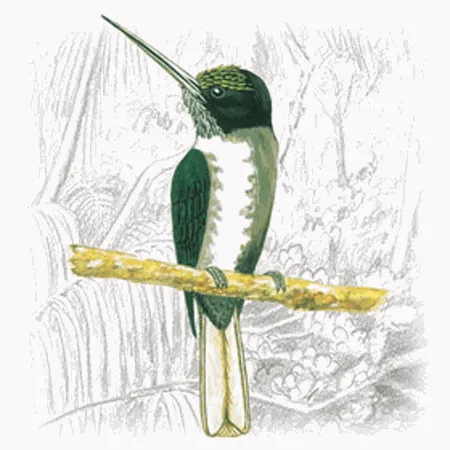
Three-toed Jacamar
[order] PICIFORMES | [family] Galbulidae | [latin] Jacamaralcyon tridactyla | [UK] Three-toed Jacamar | [FR] Jacamar tridactyle | [DE] Dreizehen-Glanzvogel | [ES] Jacamara Tridactilo | [NL] Drieteenglansvogel
Subspecies
| Genus | Species | subspecies | Breeding Range | Breeding Range 2 | Non Breeding Range |
| Galbula | tridactyla | ||||
| Jacamaralcyon | tridactyla | SA | se Brazil |
Physical charateristics
It has a brownish head, thickly mottled with thin pale streaks giving it a porcupine-like appearance on the face. It has dull green upperparts, a white breast and belly, and a long dark bill.
Listen to the sound of Three-toed Jacamar
[audio:http://www.aviflevoland.nl/sounddb/T/Three-toed Jacamar.mp3]
Copyright remark: Most sounds derived from xeno-canto
| wingspan min.: | 0 | cm | wingspan max.: | 0 | cm |
| size min.: | 18 | cm | size max.: | 19 | cm |
| incubation min.: | 0 | days | incubation max.: | 0 | days |
| fledging min.: | 0 | days | fledging max.: | 0 | days |
| broods: | 0 | eggs min.: | 0 | ||
| eggs max.: | 0 |
Range
South America : Southeast Brazil. It is endemic to a small region of the Atlantic forests of southeastern Brazil.
Habitat
Open woodland, lowlands.
Reproduction
Burrows are sometimes attended by groups, suggesting cooperative breeding, and have been recorded in clusters of up to 20 in a single bank.
Feeding habits
Prefers flying insects. Perches on tall grasses at the edge of forest to watch for prey, then darts out and catches it in mid-air.
Conservation
Although capable of surviving in some degraded woodlots, this species has undergone a major decline, such that the remaining population is believed to be very small and fragmented. Habitat loss and degradation continue to threaten populations, which are likely to be declining. For these reasons it qualifies as Vulnerable.

Migration
Distribution map

